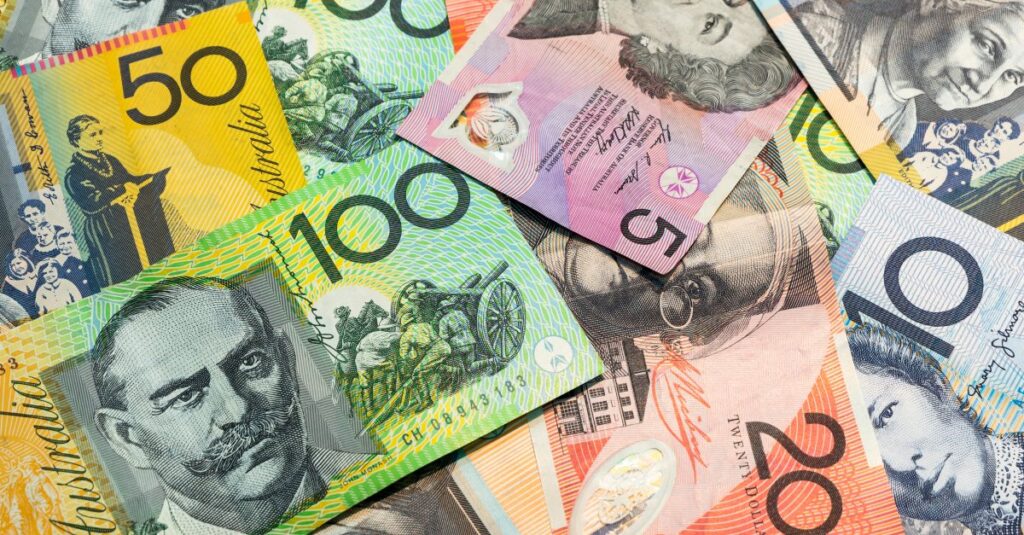Australian Dollar Fall In the fast-paced world of foreign exchange markets, the Australian dollar faced a sharp decline during European trade on Monday. This sudden fall came as a surprise to many, especially after the currency had reached a one-week high against the US dollar. The Australian dollar’s performance took a hit and became the worst-performing major currency, leaving traders and investors wondering about the underlying causes.
Australian Dollar Fall The Concerning Data
Recent data from China played a significant role in shaping the fate of the Australian dollar. Major sectors of the Chinese economy showed signs of slowing down in September. This raised concerns about the need for further fiscal and monetary support from Chinese authorities, which could have a ripple effect on the global economy.
AUD/USD Exchange Rate
The AUD/USD exchange rate bore the brunt of these concerns, falling by 0.6% to 0.63941 during the trading session. The currency had momentarily rallied, reaching a session-high at 0.6445, but it failed to sustain this momentum. Just on the previous Friday, it had managed to climb 0.1% and scale a one-week high at 65.01 cents.
The Aussie’s Recent Struggles
This downturn in the Australian dollar is part of a broader trend. The Aussie had already experienced a tough September, dropping by 0.8% against the US dollar. This marked the second consecutive monthly loss, mainly attributed to the Reserve Bank of Australia’s decision to pause interest rate hikes. In the last quarter, the Australian dollar had slumped by a significant 3.4% against its US counterpart.
Australian Dollar Fall Impact on Major Currencies
The Australian dollar’s underperformance was not limited to the USD exchange rate alone. Among the major G8 currencies, the Aussie proved to be the worst performer on that day. It recorded losses of 0.6% against the US dollar, 0.5% against the euro, the pound, and the Swiss franc, and a 0.3% decline against the yen and the Canadian dollar.
Chinese Economic Slowdown
The heart of this issue lies in China’s economic performance. Despite recent official efforts to bolster the economy, recent data once again showed that China’s economic growth is slowing down considerably. This decline has direct consequences for Australia, as China is its biggest trading partner.
- China’s manufacturing PMI (Purchasing Managers’ Index) fell to 50.6 in September, down from 51.0 in August.
- The services PMI index also witnessed a drop, falling to 50.2 in September from 51.8 in August.
Australia’s Dependence on China
Australia’s economic health is closely tied to China’s, as the two nations share a robust trading partnership. Any significant wobbles in China’s economic conditions can directly impact Australian growth. As a result, the recent slowdown in the Chinese economy has sent shockwaves through Australia’s financial markets.
Australian Dollar Fall Conclusion
In conclusion, the Australian dollar’s decline in European trade is closely linked to the growing concerns about the Chinese economy. As China’s economic growth slows down, it has a direct and adverse effect on Australia, causing the Australian dollar to falter against its major counterparts. The uncertainty surrounding the global economic landscape further exacerbates the situation.
FAQs
- Why did the Australian dollar fall in European trade?
The Australian dollar fell in European trade due to concerns about the Chinese economy’s slowdown, as Australia heavily depends on China as its biggest trading partner. - How did the AUD/USD exchange rate perform during this period?
The AUD/USD exchange rate fell by 0.6% during the trading session, despite briefly reaching a one-week high. - What contributed to the Australian dollar’s recent struggles?
The Australian dollar had a tough September, with an 0.8% drop against the US dollar, mainly attributed to the Reserve Bank of Australia’s decision to pause interest rate hikes. - Which major currencies were affected by the Australian dollar’s decline?
The Australian dollar underperformed against several major currencies, including the US dollar, euro, pound, Swiss franc, yen, and Canadian dollar. - Why is China’s economic performance important for Australia?
China is Australia’s biggest trading partner, so any economic slowdown in China directly affects Australian growth prospects.

